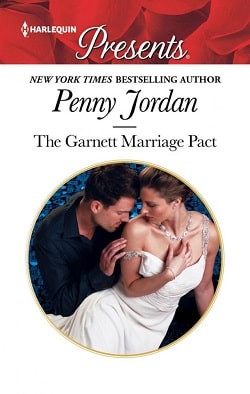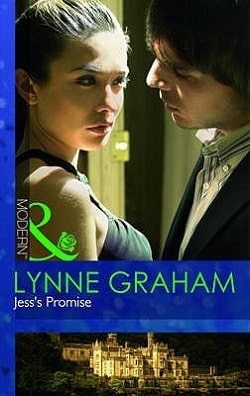Chapter 10
I
WORK STOPPED AT NOON on Saint Augustine’s Day. Most of the builders greeted the midday bell with a sigh of relief. They normally worked from sunrise to sunset, six days a week, so they needed the rest they got on holy days. However, Jack was too absorbed in his work to hear the bell.
He was mesmerized by the challenge of making soft, round shapes out of hard rock. The stone had a will of its own, and if he tried to make it do something it did not want to do, it would fight him, and his chisel would slip, or dig in too deeply, spoiling the shapes. But once he had got to know the lump of rock in front of him he could transform it. The more difficult the task, the more fascinated he was. He was beginning to feel that the decorative carving demanded by Tom was too easy. Zigzags, lozenges, dogtooth, spirals and plain roll moldings bored him, and even these leaves were rather stiff and repetitive. He wanted to carve natural-looking foliage, pliable and irregular, and copy the different shapes of real leaves, oak and ash and birch, but Tom would not let him. Most of all he wanted to carve scenes from stories, Adam and Eve, David and Goliath, and the Day of Judgment, with monsters and devils and naked people, but he did not dare to ask.
Eventually Tom made him stop work. “It’s a holiday, lad,” he said. “Besides, you’re still my apprentice, and I want you to help me clear up. All tools must be locked away before dinner.”
Jack put away his hammer and chisels, and carefully deposited the stone on which he had been working in Tom’s shed; then he went around the site with Tom. The other apprentices were tidying up and sweeping away the stone chips, sand, lumps of dried mortar and wood shavings that littered the site. Tom picked up his compasses and level while Jack collected his yardsticks and plumb lines, and they took everything to the shed.
In the shed Tom kept his poles. These were long iron rods, square in cross-section and dead straight, all exactly the same length. They were kept in a special wooden rack which was locked. They were measuring sticks.
As they continued around the site, picking up mortarboards and shovels, Jack was thinking about the poles. “How long is a pole?” he asked.
Some of the masons heard him and laughed. They often found his questions amusing. Edward Short, a diminutive old mason with leathery skin and a twisted nose, said: “A pole is a pole,” and they laughed again.
They enjoyed teasing the apprentices, especially if it gave them a chance to show off their superior knowledge. Jack hated to be laughed at for his ignorance but he put up with it because he was so curious. “I don’t understand,” he said patiently.
“An inch is an inch, a foot is a foot, and a pole is a pole,” said Edward.
A pole was a unit of measurement, then. “So how many feet are there in a pole?”
“Aha! That depends. Eighteen, in Lincoln. Sixteen in East Anglia.”
Tom interrupted to give a sensible answer. “On this site there are fifteen feet to a pole.”
A middle-aged woman mason said: “In Paris they don’t use the pole at all—just the yardstick.”
Tom said to Jack: “The whole plan of the church is based on poles. Fetch me one and I’ll show you. It’s time you understood these things.” He gave Jack a key.
Jack went to the shed and took a pole from the rack. It was quite heavy. Tom liked to explain things, and Jack loved to listen. The organization of the building site made an intriguing pattern, like the weaving on a brocade coat, and the more he understood, the more fascinated he became.
Tom was standing in the aisle at the open end of the half-built chancel, where the crossing would be. He took the pole and laid it on the ground so that it spanned the aisle. “From the outside wall to the middle of the pier of the arcade is a pole.” He turned the pole end over end. “From there to the middle of the nave is a pole.” He turned it over again, and it reached the middle of the opposite pier. “The nave is two poles wide.” He turned it over again, and it reached to the wall of the far aisle. “The whole church is four poles wide.”
“Yes,” said Jack. “And each bay must be a pole long.”
Tom looked faintly annoyed. “Who told you that?”
“Nobody. The bays of the aisles are square, so if they’re a pole wide they must be a pole long. And the bays of the nave are the same length as the bays of the aisles, obviously.”
“Obviously,” said Tom. “You should be a philosopher.” In his voice was a mixture of pride and irritation. He was pleased that Jack was quick to understand, irritated that the mysteries of masonry should be so easily grasped by a mere boy.
Jack was too caught up in the splendid logic of it all to pay attention to Tom’s sensitivities. “The chancel is four poles long, then,” he said. “And the whole church will be twelve poles when it’s finished.” He was struck by another thought. “How high will it be?”
“Six poles high. Three for the arcade, one for the gallery, and two for the clerestory.”
“But what’s the point of having everything measured by poles? Why not build it all higgledy-piggledy, like a house?”
“First, because it’s cheaper this way. All the arches of the arcade are identical, so we can reuse the falsework arches. The fewer different sizes and shapes of stone we need, the fewer templates I have to make. And so on. Second, it simplifies every aspect of what we’re doing, from the original laying-out—everything is based on a pole square—to painting the walls—it’s easier to estimate how much whitewash we’ll need. And when things are simple, fewer mistakes are made. The most expensive part of a building is the mistakes. Third, when everything is based on a pole measure, the church just looks right. Proportion is the heart of beauty.”
Jack nodded, enchanted. The struggle to control an operation as ambitious and intricate as building a cathedral was endlessly fascinating. The notion that the principles of regularity and repetition could both simplify the construction and result in a harmonious building was a seductive idea. But he was not sure whether proportion was the heart of beauty. He had a taste for wild, spreading, disorderly things: high mountains, aged oaks, and Aliena’s hair.
He ate his dinner ravenously but quickly, then he left the village, heading north. It was a warm early-summer day, and he was barefoot. Ever since he and his mother had come to live in Kingsbridge for good, and he had become a worker, he had enjoyed returning to the forest periodically. At first he had spent the time getting rid of surplus energy, running and jumping, climbing trees and shooting ducks with his sling. That was when he was getting used to the new, taller, stronger body he now had. The novelty of that had worn off. Now when he walked in the forest he thought about things: why proportion should be beautiful, how buildings stayed standing, and what it would be like to stroke Aliena’s breasts.
He had worshiped her from a distance for years. His abiding picture of her was from the first time he had seen her, as she came down the stairs to the hall at Earlscastle, and he had thought she must be a princess in a story. She had continued to be a remote figure. She talked to Prior Philip, and Tom Builder, and Malachi the Jew, and the other wealthy and powerful people of Kingsbridge; and Jack never had a reason to address her. He just looked at her, praying in church or riding her palfrey across the bridge, or sitting in the sun outside her house; wearing costly furs in winter and the finest linen in summer, her wild hair framing her beautiful face. Before he went to sleep he would think about what it would be like to take those clothes off her, and see her naked, and kiss her soft mouth gently.
In the last few weeks he had become dissatisfied and depressed with this hopeless daydreaming. Seeing her from a distance and overhearing her conversations with other people and imagining making love to her were no longer enough. He needed the real thing.















